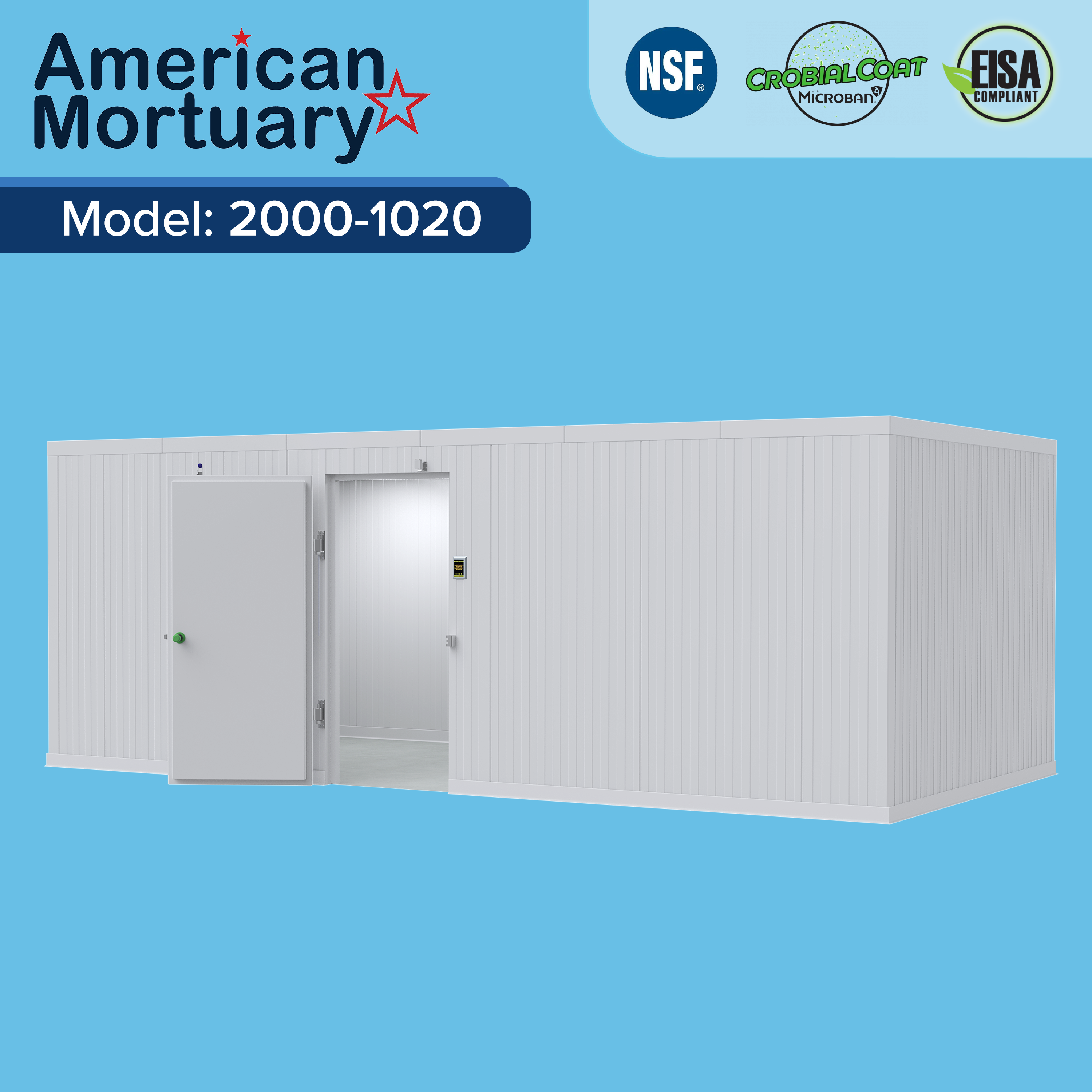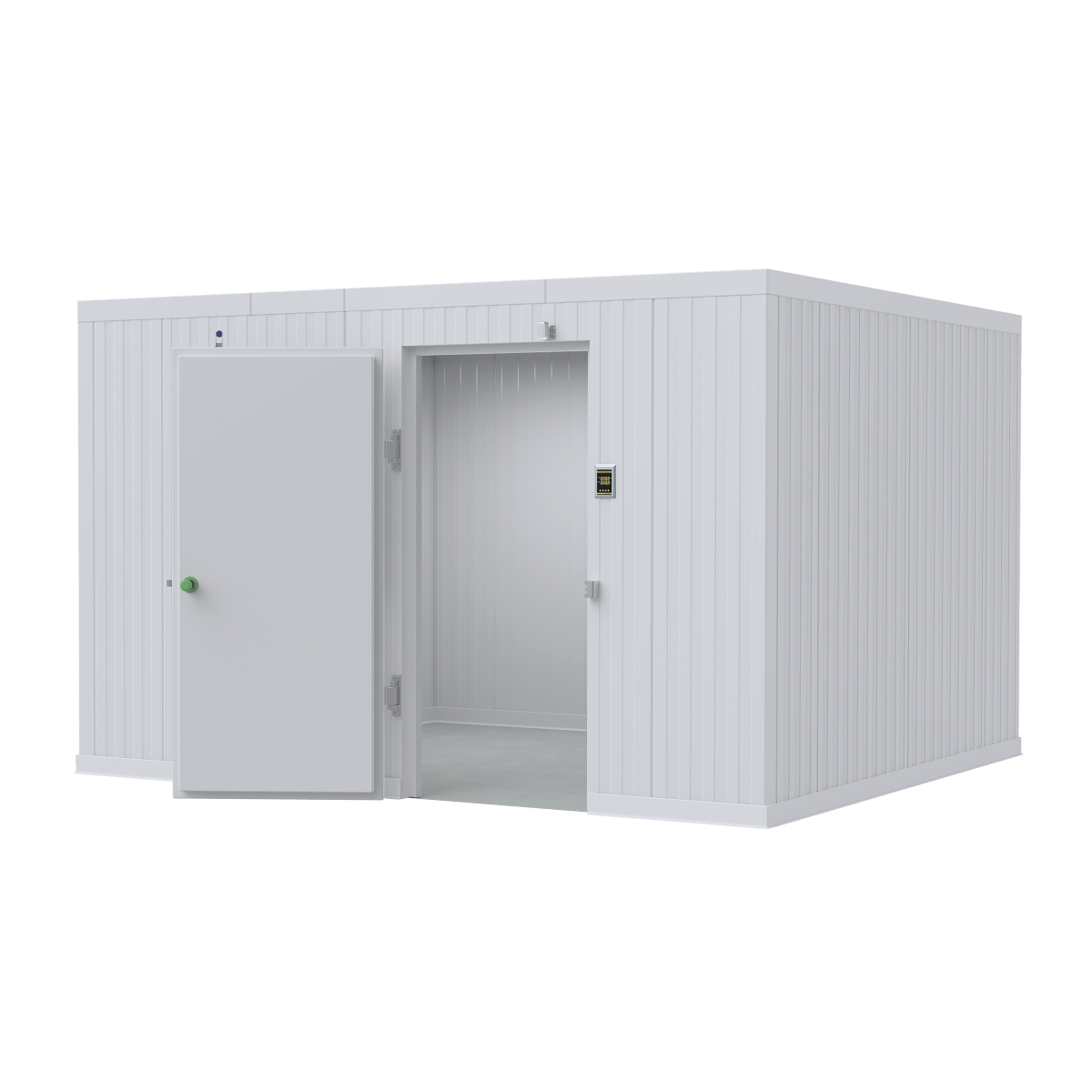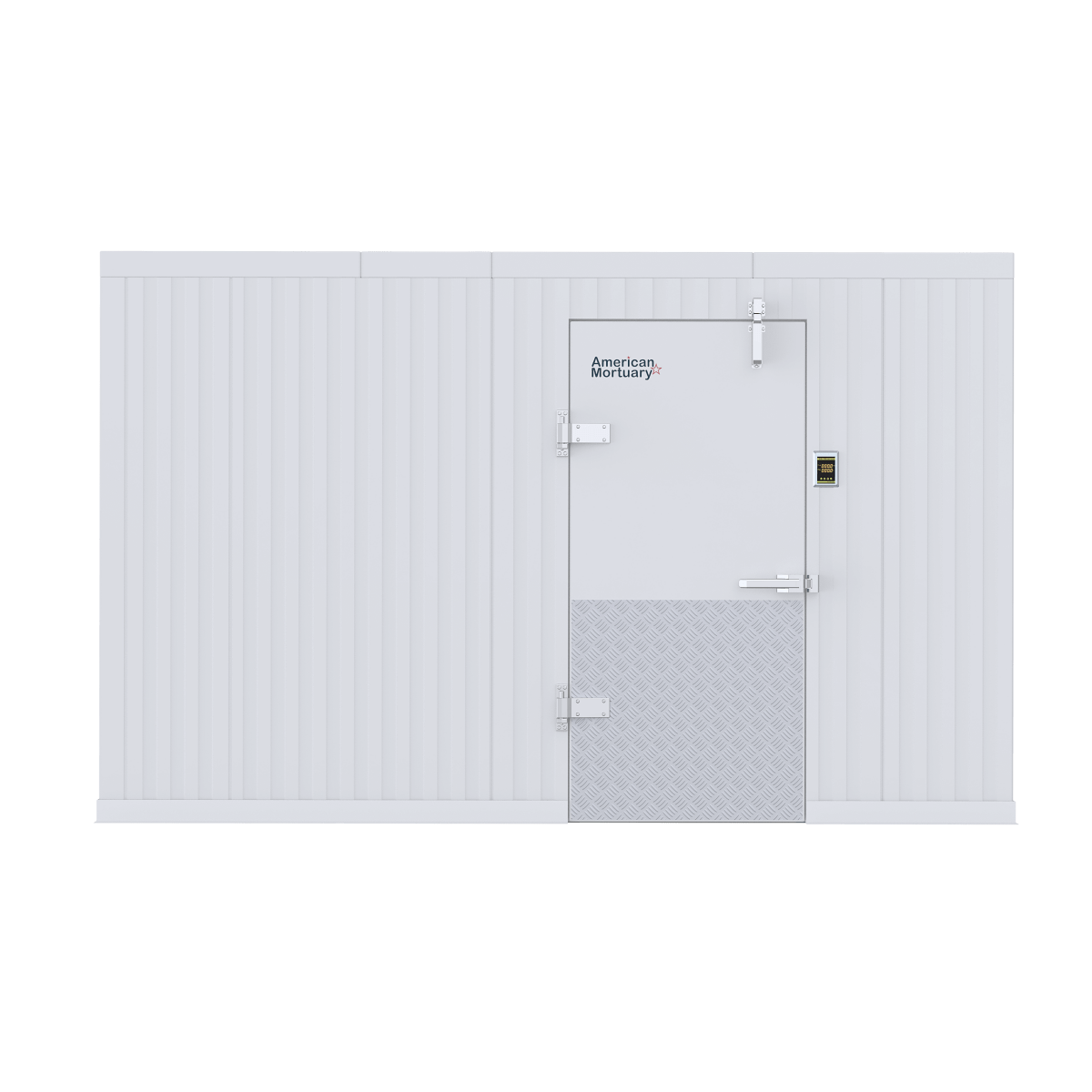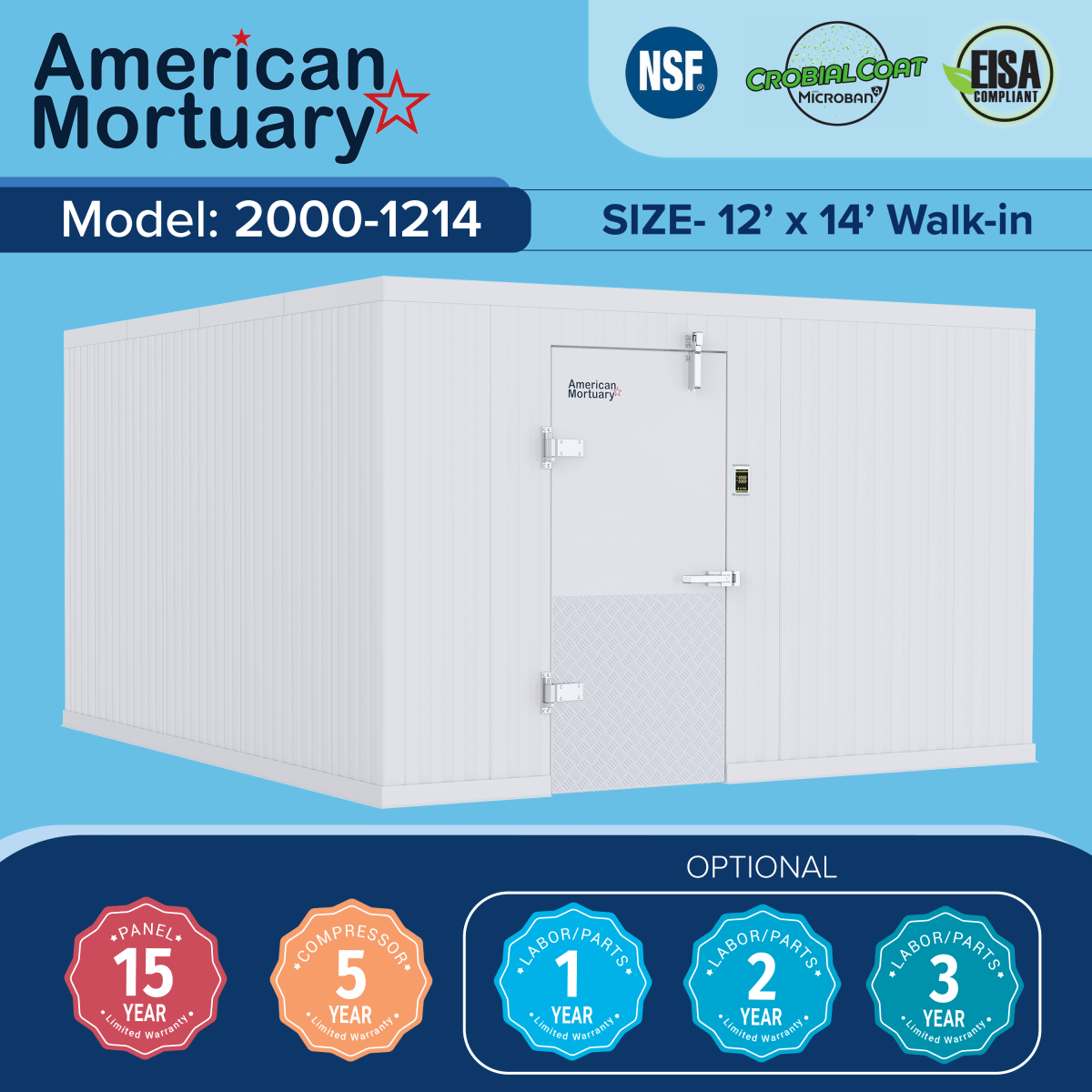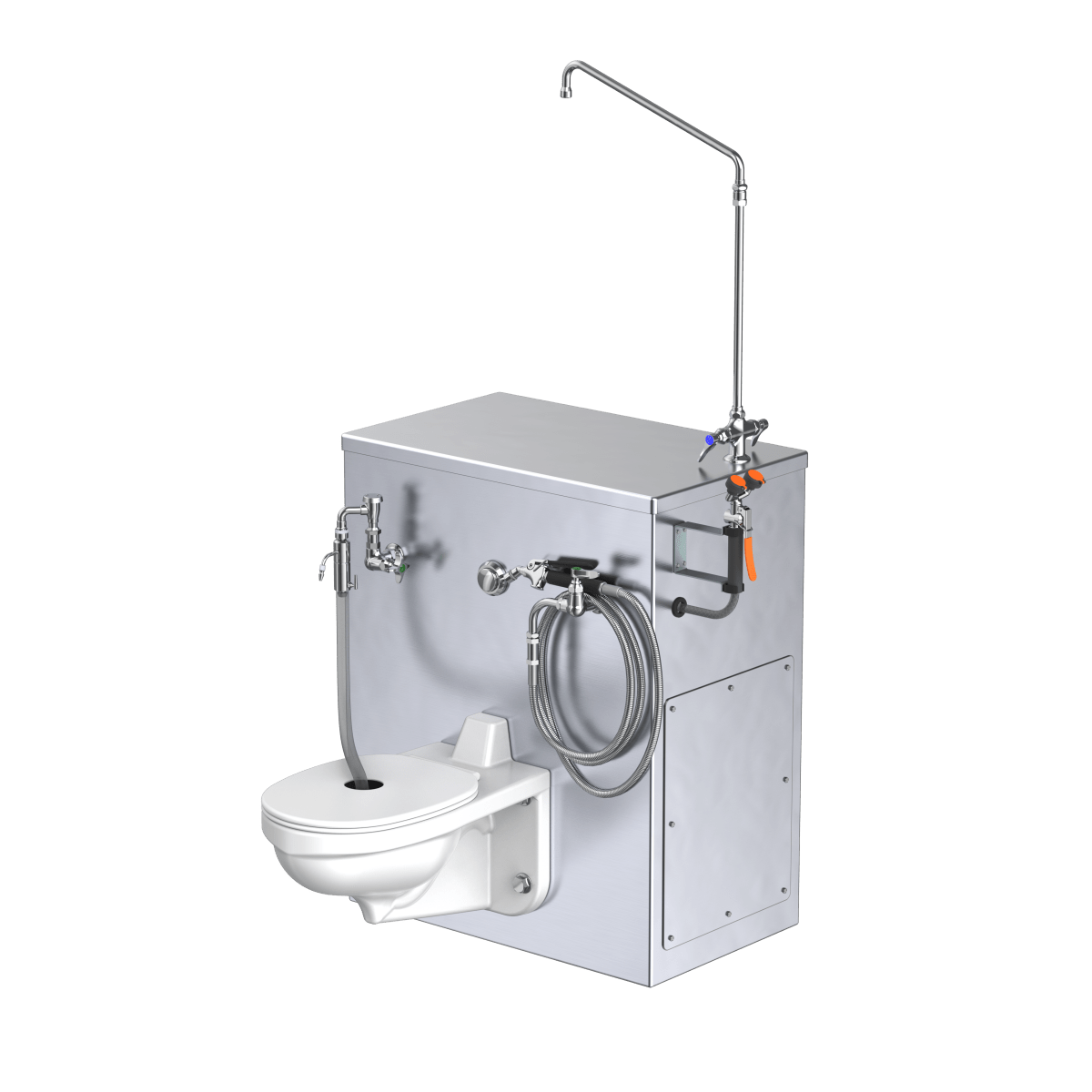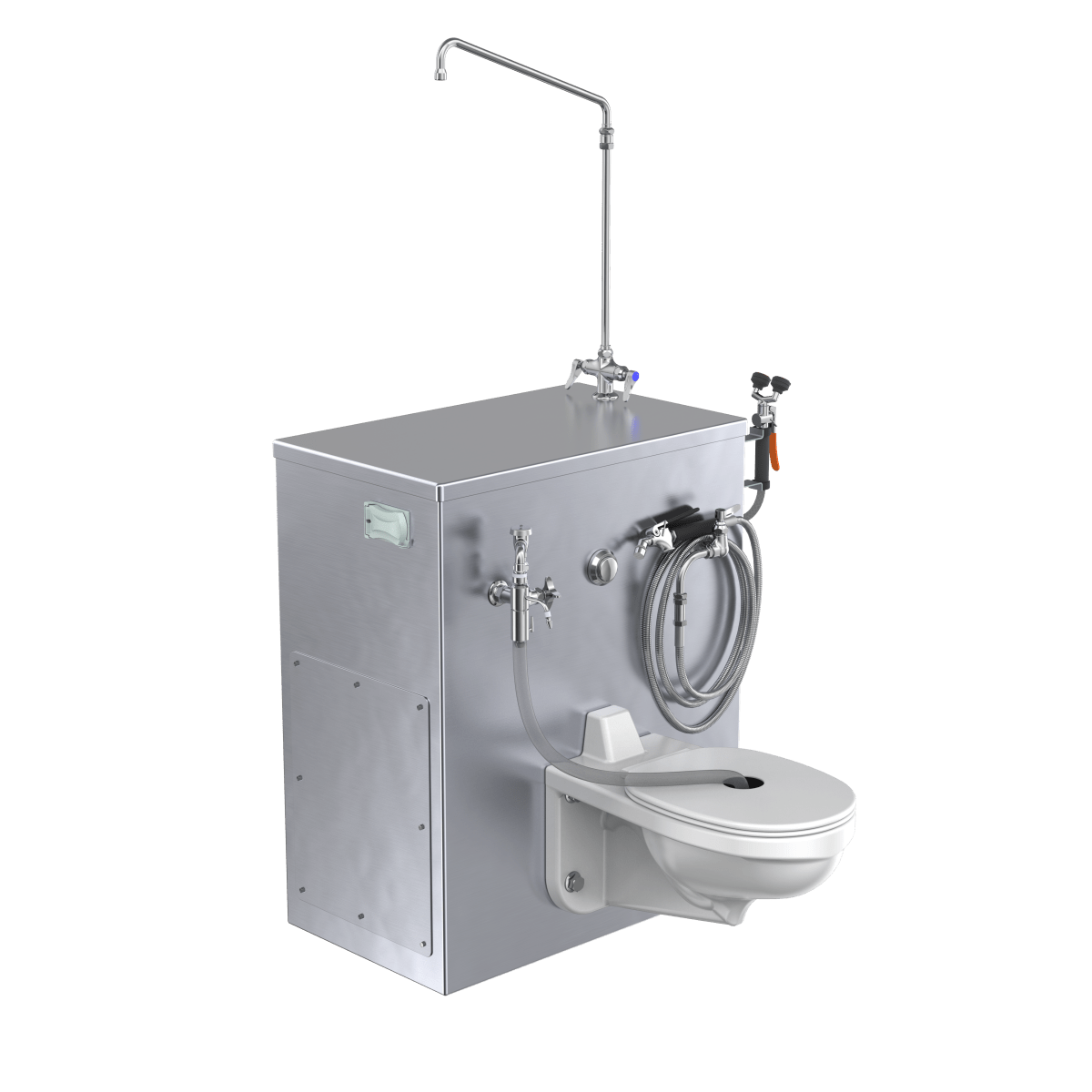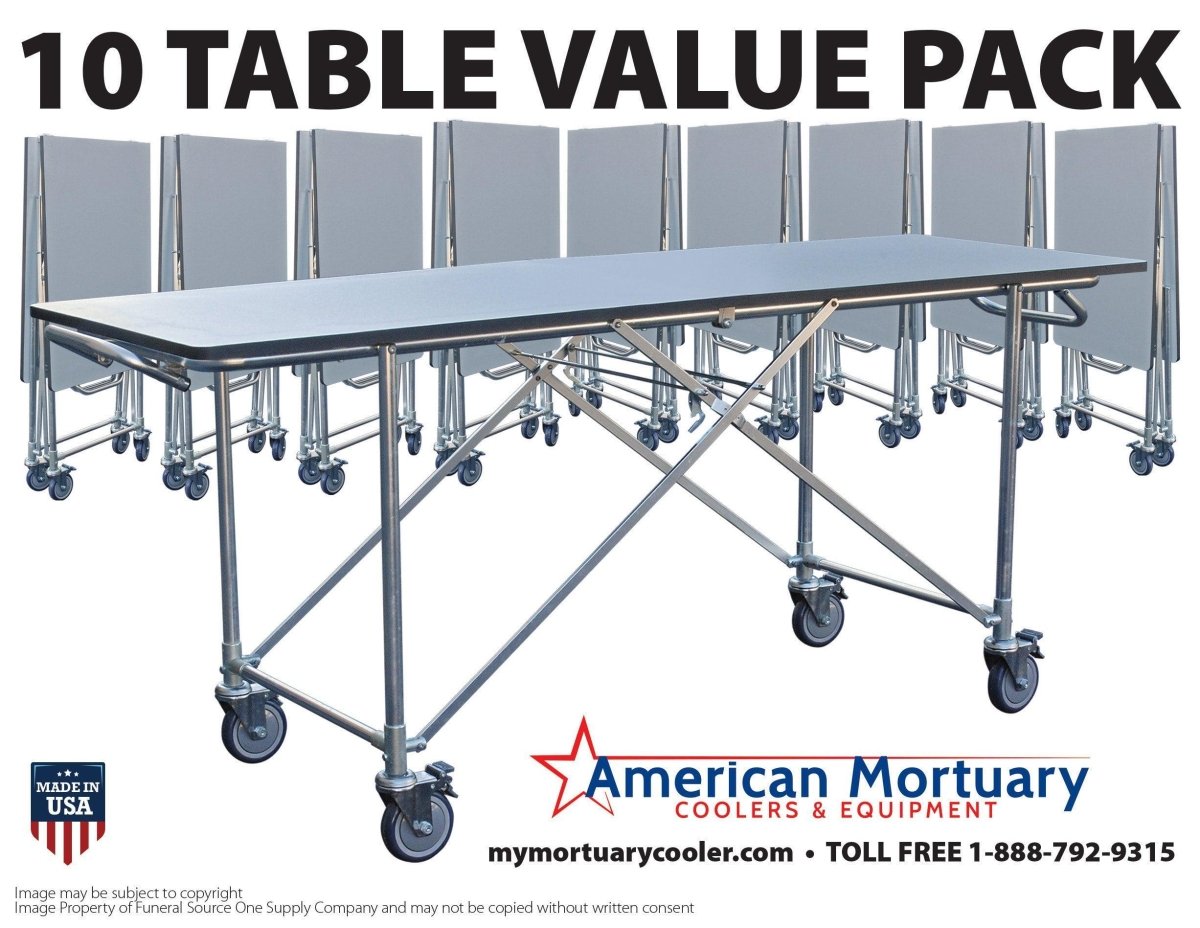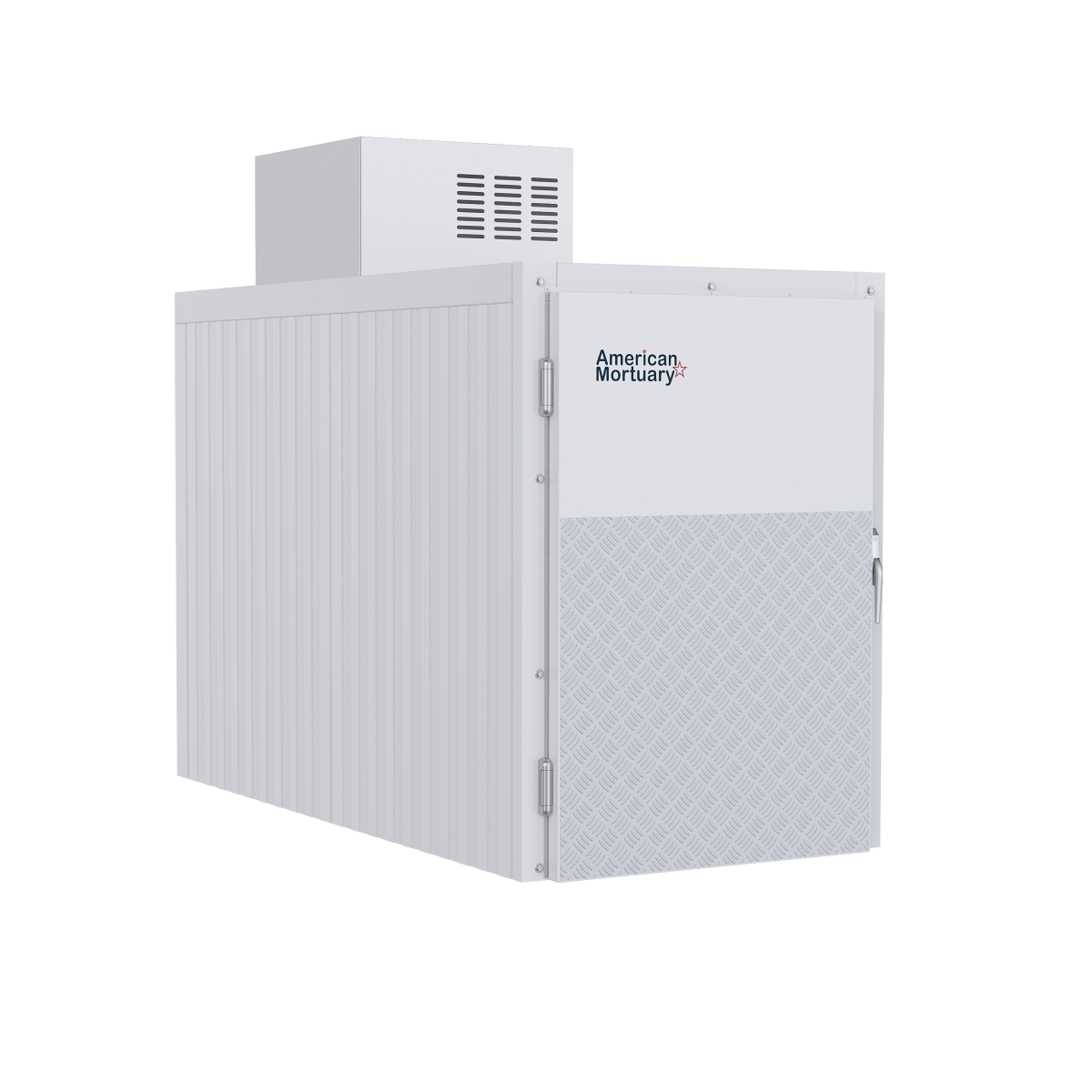Preserving Dignity and Safety: What to Know About Mortuary Dead Body Storage Freezer Doors
Mortuary dead body storage freezer doors are specialized, insulated door systems designed to keep remains at the proper temperature, ensure safety, and meet strict hygiene standards in funeral homes, hospitals, and morgues.
Quick Facts for Busy Readers:
| Feature | Detail |
|---|---|
| Purpose | Maintain cold, hygienic storage for deceased bodies |
| Key Materials | Stainless steel (SS304/SS201), polyurethane insulation |
| Door Types | Front-loading, side-loading, sliding, hinged |
| Standard Insulation | 80–100 mm polyurethane foam |
| Typical Safety Features | Safety release handle, lockable latch, door alarms |
| Regulatory Standards | NSF, CE, ISO, OSHA, EISA 2007 |
| Customization Options | Color matching, door orientation, size |
If you're searching for "mortuary dead body storage freezer doors," here's what you need to know:
- They are critical for slowing decomposition and protecting dignity.
- Most are built from corrosion-resistant stainless steel and high-density insulation to keep a stable temperature (often -18°C to +10°C).
- Safety and sanitation features such as magnetic gaskets, safety release handles, and alarms are standard for compliance and workflow efficiency.
- Options exist for door style, orientation, and capacity to fit both tight and large spaces.
"At Polar King, we recognize the importance and sensitivity involved in the storage of the deceased."
I'm Mortuary Cooler, a national-level mortuary cooler supplier with years of hands-on experience helping funeral homes and hospitals select and install mortuary dead body storage freezer doors that stand up to daily demands. My goal is to share essential facts so you can make smart, confident equipment choices.

Mortuary dead body storage freezer doors terms to learn:
Understanding Mortuary Dead Body Storage Freezer Doors
Mortuary dead body storage freezer doors are precision-engineered barriers that create the perfect environment for respectful care of the deceased. These aren't regular freezer doors - they maintain temperatures between -18°C to +10°C while providing secure, easy access when needed.
Modern systems feature individual chamber control with separate temperature settings for each door. This means you can adjust settings for different needs and turn off unused chambers to save energy.
Construction materials make all the difference. Stainless steel SS304 is the gold standard - it resists corrosion, cleans easily, and handles harsh disinfectants. SS201 grade offers solid performance at lower cost.
The insulation uses 80-100mm of polyurethane foam between walls. This high-density, HCFC-free material creates an effective thermal barrier. Magnetic gaskets create airtight seals, while heated jambs prevent ice buildup. Every door includes a safety release handle - a critical feature that could save a life.
Core Purpose & Regulatory Standards
For short-term storage, facilities maintain temperatures between 2°C to 6°C. Extended preservation requires -20°C. Each chamber operates independently for maximum flexibility.
OSHA mandates safety release handles on every door. The Energy Independence & Security Act (EISA) of 2007 sets efficiency standards. Pressure-relief vents prevent door seals from damage when temperatures change.
Certifications like NSF, CE marking, and ISO 9001 represent real safety and performance standards that protect both staff and dignity.
Key Construction Materials & Insulation
Stainless steel SS304 offers exceptional resistance to corrosion and cleaning chemicals. Its smooth, seamless surface makes thorough sanitization possible. Galvanized steel serves as a cost-effective alternative for some applications.
The insulation story centers on polyurethane foam (PUF) technology with impressive R-values of 8.49 per inch. This HCFC-free insulation meets environmental standards while delivering superior thermal performance.
High-density foam (minimum 40-45 kg/m³) provides both excellent insulation and structural strength through years of temperature cycling and daily use.
Door Types, Configurations & Capacities
Front-loading doors open outward like home refrigerators, perfect when you have plenty of floor space. Side-loading doors are lifesavers in tight spaces, opening from the side for narrow hallways. Sliding doors glide horizontally along tracks, needing only 2-3 feet of clearance.

Capacity configurations range from single-body units to 15-body systems. Popular sizes include 2, 3, 4, 6, 8, 9, 10, 12, and 15-body models. Bariatric units accommodate larger individuals with extra-wide chambers.
Modular panel systems offer incredible flexibility - start small and expand as needs grow.
Matching Door Style to Facility Layout
Front-loading doors need 6-foot clearance zones but offer excellent visibility. Side-loading doors work perfectly for narrow corridors, typically needing 4-5 feet of side clearance while keeping walkways clear.
Pass-through units with doors on both sides create workflow efficiency - load from preparation rooms and retrieve from viewing areas.
Scaling for Capacity Needs
Small funeral homes typically need 2-4 body capacity, while large hospital morgues require 15+ storage spaces. Tiered cabinet systems maximize vertical space with manageable door sizes.
Walk-in systems handle high-capacity needs from 4 to 50 bodies with specialized rack systems. Independent compressor modules provide redundancy and energy efficiency.
For specialized applications, more info about mortuary cold room doors provides detailed guidance.
Performance Factors: Temperature Control, Seals & Energy Efficiency
80-100mm polyurethane foam insulation forms your first defense against temperature fluctuations. Magnetic gasket overlap designs create multiple seal points around door perimeters, engineered for constant daily operations.
Heated door frames prevent ice buildup with low-wattage heating elements. Sensor-driven circulation fans maintain even temperatures, only running when needed. Door-open alarms protect energy efficiency and storage integrity.
Why Seals & Gaskets Matter for Longevity
Door seals and gaskets are often the make-or-break component. When these fail, energy bills can double overnight. The best systems feature replaceable seal belts that swap out with basic tools.
Cleaning protocols significantly impact seal life. Harsh disinfectants can break down rubber compounds, while aggressive scrubbing tears surfaces. Following manufacturer cleaning instructions can double seal lifespan.
Weekly visual inspections catch problems before expensive failures. Monthly detailed checks of seal compression and alignment keep systems running efficiently.
Smart Controls & Alarm Integration
High and low temperature alarms provide protection with adjustable thresholds. Power failure alarms with battery backup ensure continuous monitoring during outages.
Cloud monitoring capabilities allow oversight of multiple locations from smartphones. IoT retrofits bring older systems into the smart age with wireless sensors.
Predictive maintenance algorithms analyze performance patterns to forecast component failures weeks in advance, helping schedule maintenance during convenient times.
Safety, Sanitation & Compliance Innovations
The safety release handle is mandatory on all freezer doors, working from inside chambers even in darkness. Lockable latches provide security while keeping safety features operational.
Antimicrobial coatings actively fight bacterial growth using silver ion technology. Seamless corner construction eliminates cracks where bacteria hide, making thorough cleaning possible.
LED vapor-proof fixtures provide safe, efficient illumination meeting UL requirements for challenging environments.

Meeting Global Standards
NSF/ANSI 7 standards specify materials, construction methods, and performance levels. UL-E84 testing examines fire behavior, ensuring low flame spread ratings.
CE marking demonstrates EU compliance, while ISO 9001 certification proves quality management systems. Regional codes add requirements beyond national standards.
Hygiene Best Practices for Door Surfaces
Stainless steel surfaces need approved cleaners without chlorides. Clean in grain direction and rinse thoroughly. Quaternary ammonium compounds work for routine cleaning, while phenolic disinfectants handle specific pathogens.
Gasket replacement cycles depend on usage and cleaning chemicals. High-use facilities typically need annual replacement. Training staff on proper procedures ensures consistent results and prevents expensive damage.
Customization, Maintenance & Emerging Trends
PMS color matching helps equipment blend with facility aesthetics. Door orientation flexibility allows left or right swinging, with some reconfigurable later. Window ports let staff check contents without opening doors, saving energy.
Smart glass technology switches from clear to opaque at button touch. Predictive maintenance systems monitor door cycles and seal compression, predicting failures before they happen.
Modular retrofit systems offer cost-effective upgrades for older equipment without full replacement.
Routine Care Checklist
Weekly seal inspections should become routine - look for cracks, tears, or poor contact areas. Quarterly hinge maintenance with food-grade lubricants keeps doors operating smoothly.
Annual temperature calibration ensures displays match reality. Service contracts often make financial sense for busy facilities, covering maintenance and emergency repairs.
Future-Ready Technologies
RFID access control systems create automatic audit trails. Biometric locks ensure only authorized access with fingerprint or retinal scanners.
AI energy optimization learns usage patterns and automatically adjusts operation. Eco-refrigerants offer improved environmental performance with better efficiency.
IoT integration enables comprehensive monitoring from anywhere, while blockchain technology creates tamper-proof records for sensitive cases.
Frequently Asked Questions about Mortuary Dead Body Storage Freezer Doors
What safety features are mandatory on mortuary dead body storage freezer doors?
OSHA requires safety release handles on every freezer door to prevent accidental entrapment. These handles must work from inside chambers, even in darkness or with limited mobility, overriding any external locks.
Lockable latches balance security with safety, allowing key or combination locks while keeping safety releases functional. Comprehensive alarm systems include temperature excursions, sensor failures, door-open alerts, power failures, and low battery warnings.
Pressure relief vents prevent pressure buildup that could make doors impossible to open during temperature changes.
How often should door gaskets be replaced to maintain temperature integrity?
High-use facilities typically need annual gasket replacement, while smaller operations might extend to 2-3 years. Watch your gaskets, not your watch - do weekly visual inspections for cracks, tears, or poor spring-back.
Harsh cleaning chemicals break down rubber compounds faster than normal wear. Quality gaskets include wear indicators - colored strips or texture changes that signal replacement time before failure occurs.
Can I retrofit smart alarms onto existing mortuary dead body storage freezer doors?
Wireless sensor systems are perfect for retrofits without running new wires. Battery-powered sensors communicate with central hubs connecting to internet or cellular networks. Installation typically takes hours, not days.
Typical retrofit kits include temperature sensors, door monitors, humidity sensors, and smartphone apps for remote monitoring. Many systems integrate with existing building management without creating separate systems to manage.
Conclusion
Choosing the right mortuary dead body storage freezer doors means investing in systems that honor dignity while protecting staff and meeting regulatory standards.
The best systems combine stainless steel construction (preferably SS304) with 80-100mm polyurethane foam insulation. Safety features can't be compromised - OSHA-compliant releases, comprehensive alarms, and secure locks protect lives and prevent violations.
Energy efficiency through magnetic seals, heated jambs, and smart controls dramatically reduces operating costs. Regulatory compliance with NSF, CE, ISO standards provides peace of mind.
Customization options like door orientation flexibility and capacity scaling help systems fit existing facilities. Whether planning new construction or upgrading equipment, the right doors adapt to your requirements.
American Mortuary Coolers offers durable, custom-built solutions delivered nationwide. Our Tennessee-based team crafts systems specifically for your needs, with direct delivery across the contiguous 48 states.
The right door selection creates a foundation for reliable, dignified service. Take time to evaluate options carefully - this decision will serve your facility for years to come.



